 Each week, BBC Radio 4 broadcasts readings from a book serialised in five 15-minute episodes. In the week beginning 18 January 2021, the readings were from English Pastoral: An Inheritance by James Rebanks, a farmer from the Cumbrian fells. His farm is relatively small, covering 185 acres.
Each week, BBC Radio 4 broadcasts readings from a book serialised in five 15-minute episodes. In the week beginning 18 January 2021, the readings were from English Pastoral: An Inheritance by James Rebanks, a farmer from the Cumbrian fells. His farm is relatively small, covering 185 acres.
He has attempted to make it much more sustainable and less intensive, reintroducing traditional Herdwick sheep, having a mixture of cows and sheep rather than just sheep, a greater sub-division of fields, and more natural scrubland, peatbogs and trees. As a result, soil quality has improved and there has been an explosion of biodiversity, with an abundance of wild flowers and insects.
Apart from being an autobiography of his time as a farmer and his attempt to move towards more traditional methods, the book examines broader issues of agricultural sustainability. It looks at the pressures of consumers wanting cheap food, the market power of supermarkets and wholesalers, the cost pressures on farmers pushing them towards monoculture to achieve economies of scale, and the role of the agrichemicals industry promoting fertilisers, feeds and pesticides which bring short-term financial gains to farmers, but which cause longer-term damage to the land and to biodiversity.
Rebanks has gained quite a lot of media attention after the publication of his first book, The Shepherd’s Life, including being one of the guests on Desert Island Discs and the subject of an episode of The Food Programme.
Listen to the Food Programme podcast and try answering the questions, which are all based on the podcast in the order of the points made in the interview.
Podcast
Reviews
Questions
- What are the incentives of an unregulated market for food that result in monoculture and a loss of biodiversity?
- To what extent are consumers responsible for changes in farming methods?
- Have the changes helped the urban poor?
- How is the monopsony power of supermarkets and food wholesalers impacting on food production and the pattern of agriculture?
- There are various (private) economies of scale in food production, but these often involve substantial external costs and long-term private costs too. How does this impact on land use?
- What are some of the limits of technology in increasing crop, meat and dairy yields?
- Will more recent changes in the pattern of food consumption help to increase mixed farming and biodiversity?
- Is it ‘rational’ for many farmers to continue with intensive farming with high levels of artificial fertilisers and pesticides?
- Is diversity in farming across farms within a local area a public good? If so, how could such diversity be achieved?
- How can farmers be encouraged to think and act holistically?
- Is there a trade-off between food output and biodiversity?
- What are the dangers in the UK reaching an agricultural trade deal with the USA?
- What are the benefits and costs of encouraging local food markets?
 Back in November, when Joe Biden had just been elected, we considered some of his proposed policies to tackle climate change (see A new era for climate change policy?). On 20th January, the day of his inauguration, he signed 17 executive orders overturning a range of policies of the Trump presidency. Further executive orders followed. Some of these related directly to climate change.
Back in November, when Joe Biden had just been elected, we considered some of his proposed policies to tackle climate change (see A new era for climate change policy?). On 20th January, the day of his inauguration, he signed 17 executive orders overturning a range of policies of the Trump presidency. Further executive orders followed. Some of these related directly to climate change.
The first was to cancel the Keystone XL oil pipeline project. If it had gone ahead, it would have transported 830 000 barrels of oil per day from the Alberta tar sands in Canada to refineries on the Gulf Coast of Texas. It would have involved building a new pipeline from Alberta to Nebraska, where it would have linked to an existing pipeline to Texas. Extracting oil from tar sands is a particularly dirty process, involves cutting down large areas of forest (a carbon sink) and total emissions are around 20% greater per barrel than from conventional crude.
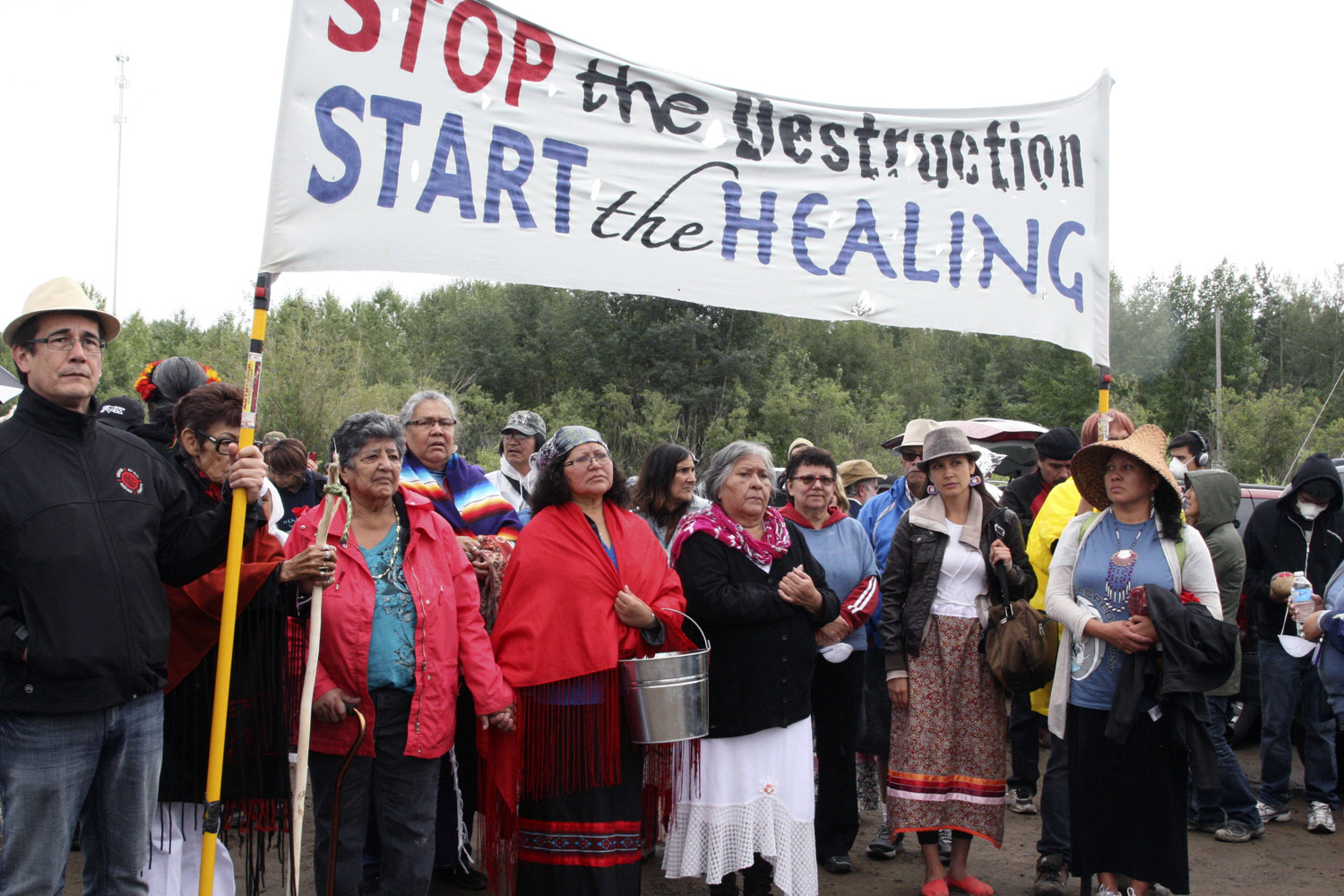 The pipeline would have cut across First Nations land and any spills would have been highly toxic to the local environment. In terms of profitability, returns on tar sands oil extraction and transportation are very low. This is likely to remain the case as oil prices are likely to remain low, with greater global energy efficiency and the switch to renewables.
The pipeline would have cut across First Nations land and any spills would have been highly toxic to the local environment. In terms of profitability, returns on tar sands oil extraction and transportation are very low. This is likely to remain the case as oil prices are likely to remain low, with greater global energy efficiency and the switch to renewables.
Critics of Biden’s decision argue that the pipeline project would have created some 5000 to 6000 temporary jobs in the USA during the two-year construction phase. Also they claim that it would have contributed to greater energy security for the USA.
 The second executive order was to rejoin the Paris Climate Agreement, a process that will take 30 days. Rejoining will involve commitments to cut greenhouse gas emissions and the adoption of various measures to bring this about. During the election campaign, Biden pledged to achieve economy-wide net-zero emissions no later than 2050. As we saw in the previous blog, under Biden the USA will play a leading role in the November 2021 UN COP26 climate change conference in Glasgow.
The second executive order was to rejoin the Paris Climate Agreement, a process that will take 30 days. Rejoining will involve commitments to cut greenhouse gas emissions and the adoption of various measures to bring this about. During the election campaign, Biden pledged to achieve economy-wide net-zero emissions no later than 2050. As we saw in the previous blog, under Biden the USA will play a leading role in the November 2021 UN COP26 climate change conference in Glasgow.
At present, the Paris agreement is for countries to aim to reach a peak of greenhouse gas emissions as soon as possible to achieve a climate neutral world by mid-century. Many countries have have made commitments about when they aim to achieve carbon neutrality, although concrete action is much more limited. It is hoped that the COP26 conference will lead to stronger commitments and actions and that the USA under Biden will play a leading part in driving this forward.
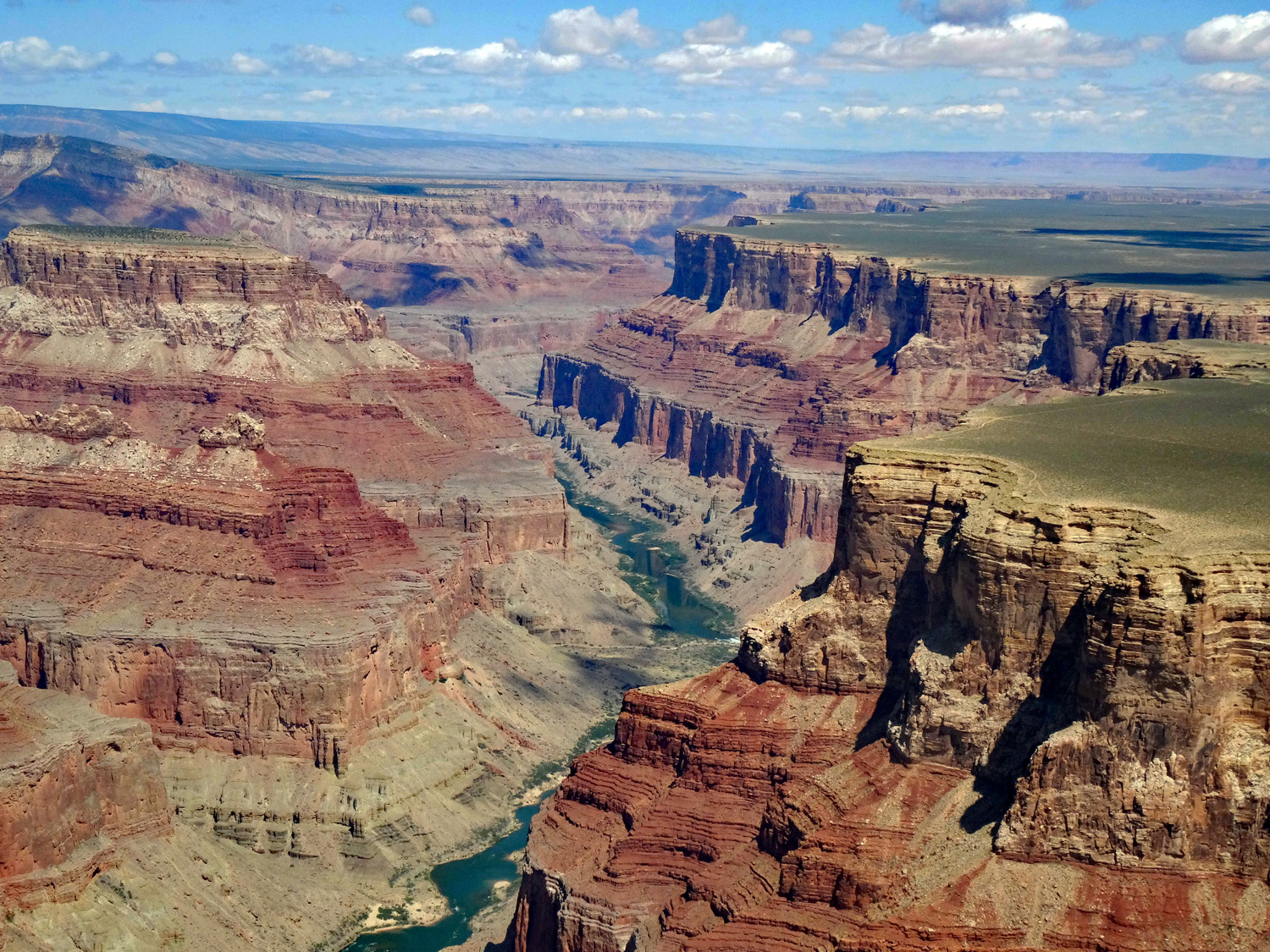 In addition, to cancelling the Keystone XL pipeline and rejoining the Paris Agreement, the executive orders reversed more than 100 other decisions with negative environmental effects taken by the Trump administration – many overturning environmental measures introduced by previous administrations, especially the Obama administration.
In addition, to cancelling the Keystone XL pipeline and rejoining the Paris Agreement, the executive orders reversed more than 100 other decisions with negative environmental effects taken by the Trump administration – many overturning environmental measures introduced by previous administrations, especially the Obama administration.
These orders included reversing the easing of vehicle emissions standards; stopping reductions in the area of two major national monuments (parks) in Utah; enforcing a temporary moratorium on oil and natural gas leases in Alaska’s Arctic National Wildlife Refuge; and re-establishing a working group on the social costs of greenhouse gasses.
Then there will be new measures, such as adopting strict fuel economy standards and investment in clean public transport. But it remains to be seen how far and fast the Biden administration can move to green the US economy. With the desire for bipartisanship and seeking an end to the divisive policies of Trump, there may be limits to what the new President can achieve in terms of new legislation, especially with a Senate divided 50:50 and only the casting vote of the chair (Kamala Harris as Vice-President) being in Democrat hands.
The articles below consider the various green policies and how likely they are to succeed in their objectives.
Articles
- Climate change: Biden’s first act sets tone for ambitious approach
BBC News, Matt McGrath (20/1/21)
- Biden nixes Keystone XL permit, halts Arctic refuge leasing
The Hill, Rachel Frazin (20/1/21)
- Biden’s return to Paris pact just a first step for U.S. climate action
Reuters, Megan Rowling (20/1/21)
- Court Decision Lets Biden Set New Emissions Rules To Meet Paris Agreement Climate Goals
Forbes, Allan Marks (20/1/21)
- Biden to ‘hit ground running’ as he rejoins Paris climate accords
The Guardian, Oliver Milman (19/1/21)
- What could a Biden-Harris administration mean for the planet?
Euronews, Marthe de Ferrer (20/1/21)
- Ask a Scientist: What Should the Biden Administration and Congress Do to Address the Climate Crisis?
ecoWatch, Elliott Negin (18/1/21)
- Biden marks Day One with burst of orders reversing Trump policies on climate and health
Science Business, Éanna Kelly (21/1/21)
- What Is the Paris Climate Agreement That Joe Biden Will Rejoin, Why Did Donald Trump Leave?
Newsweek, Kashmira Gander (18/1/21)
Questions
- Find out what other environmental policies are being pursued by President Biden and assess their likely effectiveness in achieving their environmental objectives.
- Would policies to reduce carbon emissions necessarily be desirable? How would you assess their desirability?
- When is it best to use the ‘precautionary principle’ when devising environmental policies?
- To what extent is game theory relevant in understanding the difficulties and opportunities of developing internationally agreed policies on carbon reduction?
- If the objective is to tackle global warming, is it better to seek international agreement on limiting the extent of global warming or international agreement on carbon reduction? Explain.
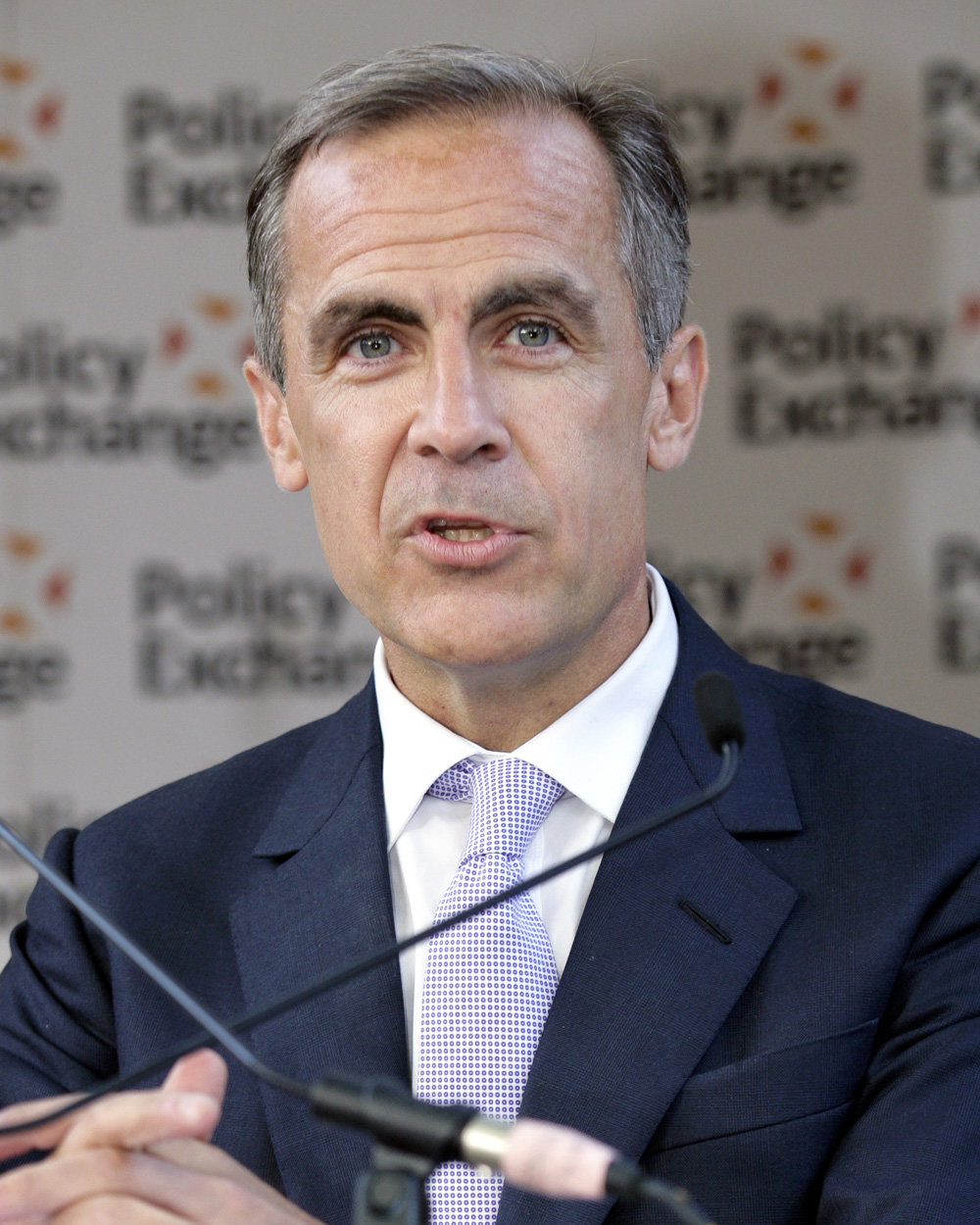 Each year the BBC hosts the Reith Lectures – a series of talks given by an eminent person in their field. This year’s lecturer is Mark Carney, former Governor of the Bank of England. His series of four weekly lectures began on 2 December 2020. Their topic is ‘How we get what we value’. As the BBC site states, the lectures:
Each year the BBC hosts the Reith Lectures – a series of talks given by an eminent person in their field. This year’s lecturer is Mark Carney, former Governor of the Bank of England. His series of four weekly lectures began on 2 December 2020. Their topic is ‘How we get what we value’. As the BBC site states, the lectures:
chart how we have come to esteem financial value over human value and how we have gone from market economies to market societies. He argues that this has contributed to a trio of crises: of credit, Covid and climate. And the former Bank of England governor will outline how we can turn this around.
 In lectures 2, 3 and 4, he looks at three crises and how they have shaped and are shaping what we value. The crises are the financial crisis of 2007–9, the coronavirus pandemic and the climate crisis. They have challenged how we value money, health and the environment respectively and, more broadly, have prompted people to question what is valuable for individuals and society, both today and into the future.
In lectures 2, 3 and 4, he looks at three crises and how they have shaped and are shaping what we value. The crises are the financial crisis of 2007–9, the coronavirus pandemic and the climate crisis. They have challenged how we value money, health and the environment respectively and, more broadly, have prompted people to question what is valuable for individuals and society, both today and into the future.
The questions posed by Carney are how can we establish what is valuable to individuals and society, how well are such values met by economies and how can mechanisms be improved to ensure that we make the best use of resources in meeting those values.
Value and the market
In the first lecture he probes the concept of value. He explores how economists and philosophers have tried to value the goods, services and human interactions that we desire.
First there is ‘objective value’ propounded by classical economists, such as Adam smith, David Ricardo and Karl Marx. Here the value of goods and services depends on the amount of resources used to make them and fundamentally on the amount of labour. In other words, value is a supply-side concept.
This he contrasts with ‘subjective value’. Here the value of goods and services depends on how well they satisfy wants – how much utility they give the consumer. For these neoclassical economists, value is in the eye of the beholder; it is a demand-side concept.
The two are reconciled in the market, with market prices reflecting the balance of demand and supply. Market prices provided a solution to the famous diamonds/water paradox (see Box 4.2 in Economics (10th edition) or Case Study 4.3 in Essentials of Economics (8th edition) – the paradox of ‘why water, which is essential for life, is virtually free, but diamonds, which have limited utility beyond their beauty, are so expensive.’ The answer is to do with scarcity and marginal utility. Because diamonds are rare, the marginal utility is high, even though the total utility is low.  And because water is abundant, even though its total utility is high, for most people its marginal utility is low. In other words, the value at the margin depends on the balance of demand and supply. Diamonds are much scarcer than water.
And because water is abundant, even though its total utility is high, for most people its marginal utility is low. In other words, the value at the margin depends on the balance of demand and supply. Diamonds are much scarcer than water.
But is the market balance the right balance? Are the values implied by the market the same as those of society? ‘Why do financial markets rate Amazon as one of the world’s most valuable companies, but the value of the vast region of the Amazon appears on no ledger until it’s stripped of its foliage and converted into farmland?’ – another paradox highlighted by Carney.
It has long been recognised that markets fail in a number of ways. They are not perfect, with large firms able to make supernormal profits by charging more and producing less, and consumers often being ill-informed and behaving impulsively or being swayed by clever marketing. And many valuable things that we experience, such as human interaction and the beauty of nature, are not bought and sold and thus do not appear in measures of GDP – one of the main ways of valuing a country.
 What is more, many of things that are produced in the market have side-effects which are not reflected in prices. These externalities, whether good or bad, can be substantial: for example, the global warming caused by CO2 emissions from industry, transport and electricity production from fossil fuels.
What is more, many of things that are produced in the market have side-effects which are not reflected in prices. These externalities, whether good or bad, can be substantial: for example, the global warming caused by CO2 emissions from industry, transport and electricity production from fossil fuels.
And markets reflect people’s biases towards the present and hence lead to too little investment for the future, whether in healthcare, the environment or physical and social infrastructure. Markets reflect the scant regard many give to the damage we might be doing to the lives of future generations.
What is particularly corrosive, according to Carney, is the
drift from moral to market sentiments. …Increasingly, the value of something, some act or someone is equated with its monetary value, a monetary value that is determined by the market. The logic of buying and selling no longer applies only to material goods, but increasingly it governs the whole of life from the allocation of healthcare, education, public safety and environmental protection. …Market value is taken to represent intrinsic value, and if a good or activity is not in the market, it is not valued.
The drift from moral to market sentiments accelerated in the Thatcher/Regan era, when governments were portrayed as inefficient allocators, which stifled competition, innovation and the movement of capital. Deregulation and privatisation were the order of the day. This, according to Carney, ‘unleashed a new dynamism’ and ‘with the fall of communism at the end of the 1980s, the spread of the market grew unchecked.’
But this drift failed to recognise market failures. It has taken three crises, the financial crisis, Covid and the climate crisis to bring these failures to the top of the public agenda. They are examined in the other three lectures.
The Reith Lectures
Questions
- Distinguish between objective and subjective value.
- If your income rises, will you necessarily be happier? Explain.
- How is the concept of diminishing marginal utility of income relevant to explaining why ‘A Christmas bonus of £1000 means less to Mark Zuckerberg then £500 does to someone on a minimum wage.’
- Does the use of social cost–benefit analysis enable us to use adjusted prices as a measure of value?
- Listen to lectures 2, 3 and 4 and provide a 500-word summary of each.
- Assess the arguments Mark Carney uses in one of these three lectures.

With the election of Joe Biden, the USA will have a president committed to tackling climate change. This is in stark contrast to Donald Trump, who has been publicly sceptical about the link between human action and climate change and has actively supported the coal, oil and gas industries and has rolled back environmental protection legislation and regulation.
 What is more, in June 2017, he announced that the USA would withdraw from the UN Paris Accord, the international agreement to cut greenhouse gas emissions so as to limit global warming to ‘well below’ 2°C above pre-industrial levels with efforts to limit it to 1.5°C. The USA’s withdrawal was finalised on 4 November 2020, a day after the US election. Joe Biden, however, pledged to rejoin the accord.
What is more, in June 2017, he announced that the USA would withdraw from the UN Paris Accord, the international agreement to cut greenhouse gas emissions so as to limit global warming to ‘well below’ 2°C above pre-industrial levels with efforts to limit it to 1.5°C. The USA’s withdrawal was finalised on 4 November 2020, a day after the US election. Joe Biden, however, pledged to rejoin the accord.
A growing number of countries are pledging to achieve carbon neutrality by mid-century or earlier. The EU is planning to achieve a 55% cut in greenhouse gas emissions by 2030 so as to reach neutrality by 2050. This will involve various taxes, subsidies and public investment. Similar pledges to achieve net zero emissions by 2050 have been made by Japan and South Korea and by 2060 by China. In the UK, legislation was passed requiring the government to reduce the UK’s net emissions 100% relative to 1990 levels by 2050 and thereby achieve net zero emissions.
Constraints on action
Short-termism. One of the problems with setting targets a long time in the future is that they take away the urgency to act now. There are huge time lags between introducing policies to curb carbon emissions and their impact on the climate. The costs of such policies for business and consumers, however, are felt immediately in terms of higher taxes and/or higher prices. Thus politicians may be quick to make long-term pledges but reluctant to take firm measures today. Instead they may prefer to appease various pressure groups, such as motoring organisations, and cut fuel taxes, or, at least, not raise them. Politically, then, it may be easier to focus policy on the short term and just make pledges without action for the future.
Externalities. Various activities that cause carbon emissions, whether directly, such as heavy industry, dairy farming, aviation and shipping, or indirectly, such as oil and coal production, thereby impose environmental costs on society, both at home and abroad. These costs are negative externalities and, by their nature, are not borne by those who produce them. There are often powerful lobbies objecting to any attempt to internalise these externalities through taxes, subsidising green alternatives or regulation. Take the case of the USA. Fossil fuel producers, energy-intensive industries and farmers all claim that green policies will damage their businesses, leading to a loss of profits and jobs. These groups were courted by Donald Trump.

International competition. Countries may well be reluctant to impose green taxes or tough environmental regulation on producers, when competitors abroad do not face such constraints. Indeed, some countries are actively promoting dirty industries as part of their policies to stimulate economic recovery from the Covid-induced recession. Such countries include China, Russia and Turkey. This again was a major argument used in the Trump campaign that US industries should not be hobbled by environmental constraints but should be free to compete.
Misinformation. Politicians, knowing that taking tough environmental measures will be unpopular with large numbers of people, may well downplay the dangers of inaction. Some, such as Trump in America and Bolsonaro in Brazil deliberately appeal to climate change deniers or say that technology will sort things out. This makes it hard for other politicians to promote green policies, knowing that they will face scepticism about the science and the efficacy of their proposed policies.
Biden’s climate change policy
 Although it will be difficult to persuade some Americans of the need for tougher policies to tackle climate change, Joe Biden has already made a number of pledges. He has stated that under his administration, the USA will rejoin the Paris Climate Agreement and will play a leading role in the November 2021 UN COP26 climate change conference summit in Glasgow. He has also pledged a Clean Energy Revolution to put the USA on an ‘irreversible path to achieve economy-wide net-zero emissions no later than 2050’.
Although it will be difficult to persuade some Americans of the need for tougher policies to tackle climate change, Joe Biden has already made a number of pledges. He has stated that under his administration, the USA will rejoin the Paris Climate Agreement and will play a leading role in the November 2021 UN COP26 climate change conference summit in Glasgow. He has also pledged a Clean Energy Revolution to put the USA on an ‘irreversible path to achieve economy-wide net-zero emissions no later than 2050’.
But readopting the pledges under the Paris Agreement and advocating a clean energy revolution are not enough on their own. Specific measures will need to be taken. So, what can be done that is practical and likely to meet with the approval of the majority of Americans or, at least, of Biden’s supporters?
For a start, he can reintroduce many of the regulations that were overturned by the Trump administration, such as preventing oil and gas companies from flaring methane on public lands. He could introduce funding for the development of green technology. He could require public buildings to use green energy.
According to the Clean Energy Revolution, the US government will develop ‘rigorous new fuel economy standards aimed at ensuring 100% of new sales for light- and medium-duty vehicles will be zero emissions and annual improvements for heavy duty vehicles’.
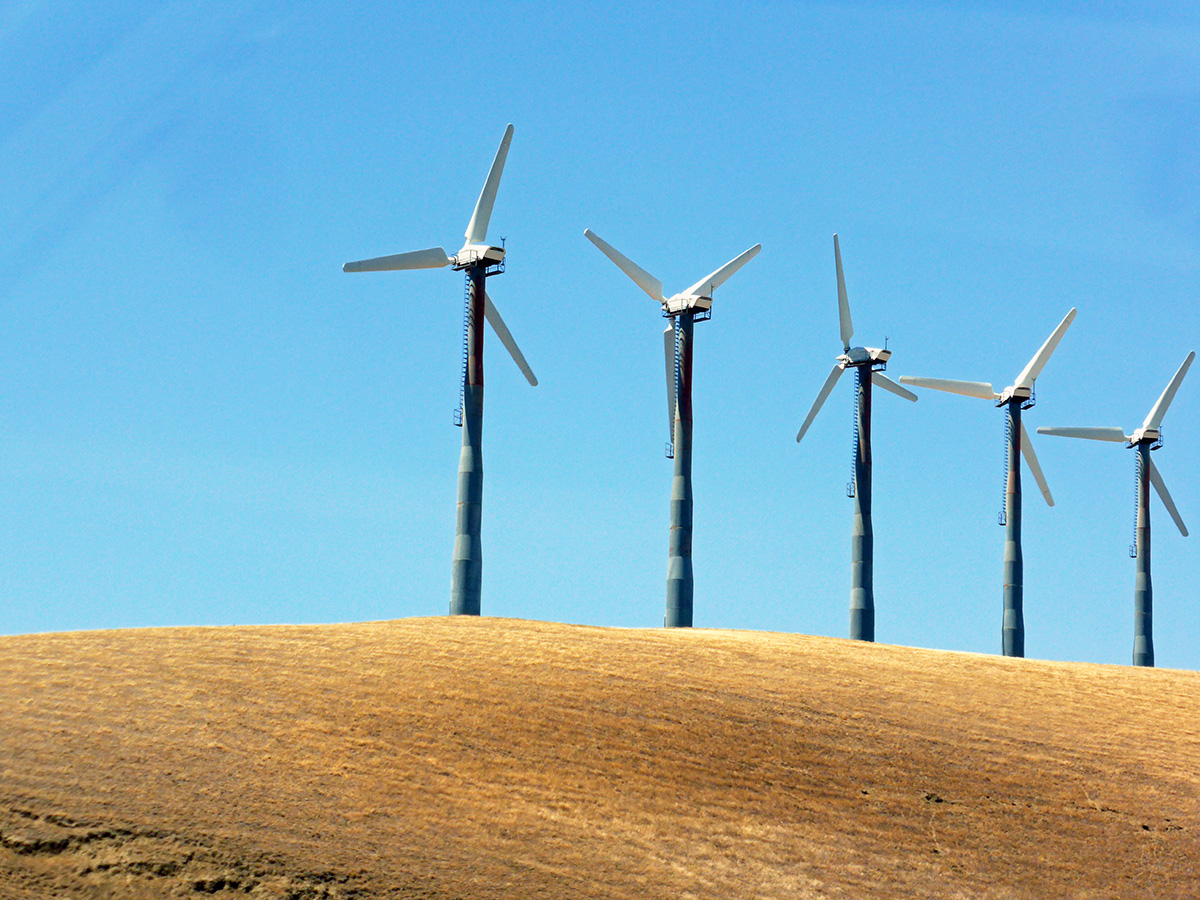 One of the biggest commitments is to tackle external costs directly by enacting ‘legislation requiring polluters to bear the full cost of their climate pollution’. This may be met with considerable resistance from US corporations. It is thus politically important for Biden to stress the short-term benefits of his policies, not just the long-term ones.
One of the biggest commitments is to tackle external costs directly by enacting ‘legislation requiring polluters to bear the full cost of their climate pollution’. This may be met with considerable resistance from US corporations. It is thus politically important for Biden to stress the short-term benefits of his policies, not just the long-term ones.
Given the damage done to the economy by the spread of the pandemic, perhaps the main thing that Biden can do to persuade people of the benefits to them of his policies is to focus on green investment and green jobs. Building a green energy infrastructure of wind, solar and hydro and investing in zero-emissions vehicles and charging infrastructure will provide jobs and lead to multiplier effects throughout the economy.
Articles
- Trump Administration Removes Scientist in Charge of Assessing Climate Change
The New York Times, Christopher Flavelle, Lisa Friedman and Coral Davenport (9/11/20)
- As U.S. leaves Paris accord, climate policy hangs on election outcome
The Washington Post, Brady Dennis, Juliet Eilperin and Dino Grandoni (5/11/20)
- Where next for US action on Climate Change?
British Foreign Policy Group, Evie Aspinall (11/11/20)
- Media reaction: What Joe Biden’s US election victory means for climate change
Carbon Brief, Josh Gabbatiss (10/11/20)
- Joe Biden: How the president-elect plans to tackle climate change
BBC News, Matt McGrath (10/11/20)
- Biden victory ushers in ‘race to the top’ on climate change
Lexology, Baker McKenzie, David P Hackett and Ilona Millar (13/11/20)
- Climate heroes: the countries pioneering a green future
The Guardian, Jonathan Watts (11/11/20)
- ‘Hypocrites and greenwash’: Greta Thunberg blasts leaders over climate crisis
The Guardian, Damian Carrington (9/11/20)
- Five post-Trump obstacles to a global green recovery
The Guardian, Jonathan Watts (11/11/20)
- Biden’s climate change plans can quickly raise the bar, but can they be transformative?
The Conversation, Edward R Carr (10/11/20)
- Jana Shea/Shutterstock Climate change: Joe Biden could ride a wave of international momentum to break deadlock in US
The Conversation, Richard Beardsworth and Olaf Corry (10/11/20)
- Climate change after COVID-19: Harder to defeat politically, easier to tackle economically
VoxEU, Franziska Funke and David Klenert (17/8/20)
Questions
- Identify three specific climate change policies of Joe Biden and assess whether each one is likely to succeed.
- Draw a diagram to illustrate why a free market will lead to over production of a good which produces negative externalities.
- To what extent can education internalise the positive externalities of green consumption and production?
- What was agreed at the Paris climate change conference in December 2015 and what mechanisms were put in place to incentivise countries to meet the targets?
- Will the coronavirus pandemic have had any lasting effects on emissions? Explain.
- How may carbon trading lead to a reduction in carbon emissions? What determines the size of such reductions?
The UK rail industry was privatised by the Conservative government in the mid-1990s. As Case Study 14.8 on the Economics 10th edition website states:
 The management of rail infrastructure, such as track, signalling and stations, was to be separated from the responsibility for running trains. There would be 25 passenger train operating companies (TOCs), each having a franchise lasting between seven and fifteen years. These companies would have few assets, being forced to rent track and lease stations from the infrastructure owner (Railtrack), and to lease trains and rolling stock from three new rolling-stock companies. …In practice, the 25 franchises were operated by just 11 companies (with one, National Express, having nine of the franchises).
The management of rail infrastructure, such as track, signalling and stations, was to be separated from the responsibility for running trains. There would be 25 passenger train operating companies (TOCs), each having a franchise lasting between seven and fifteen years. These companies would have few assets, being forced to rent track and lease stations from the infrastructure owner (Railtrack), and to lease trains and rolling stock from three new rolling-stock companies. …In practice, the 25 franchises were operated by just 11 companies (with one, National Express, having nine of the franchises).
In 1996, at the start of the franchise era, the train operating companies were largely private-sector companies such as National Express, Stagecoach, Virgin Rail and Prism Rail. By 2020, most of the franchises were operated by a foreign state-owned business or a joint venture with a foreign state-owned firm.
As a result of poor performance (see above case study), Railtrack was effectively renationalised in 2002 as Network Rail – a not-for-profit company, wholly dependent upon the UK Treasury for any shortfall in its funds.
TOCs had mixed success. Some performed so poorly that their franchise contracts had to be temporarily taken over by a state-owned operator. For example, in June 2003 the Strategic Rail Authority withdrew the operating licence of the French company Connex South Eastern. The franchise was temporarily taken over by the publicly-owned South Eastern Trains from November 2003 until March 2006 before being returned to a private operator.
Perhaps the most troubled franchise has been the East Coast Main Line between London and Scotland. It was renationalised in 2009, reprivatised in 2015 and renationalised in 2018.
The effect of the coronavirus pandemic
 The spread of the coronavirus and the accompanying lockdowns and social distancing saw a plummeting of rail travel. Passenger numbers fell to just 10% of pre-pandemic levels. In March 2020, the UK Government introduced Emergency Measures Agreements (EMAs), which temporarily replaced rail franchise agreements. TOCs were paid a 2% fee (based on pre-Covid costs) to run trains and losses were borne by the government.
The spread of the coronavirus and the accompanying lockdowns and social distancing saw a plummeting of rail travel. Passenger numbers fell to just 10% of pre-pandemic levels. In March 2020, the UK Government introduced Emergency Measures Agreements (EMAs), which temporarily replaced rail franchise agreements. TOCs were paid a 2% fee (based on pre-Covid costs) to run trains and losses were borne by the government.
When the EMAs ran out on the 20 September, they were replaced by Emergency Recovery Measures Agreements (ERMAs), set to last until no later than April 2022. Under these measures, the fees paid to TOCs were reduced to a maximum of 1.5%. These consist partly of a fixed fee (again based on pre-Covid costs) and partly on a performance payment, depending on punctuality, passenger satisfaction and financial performance. As with the EMAs, the new arrangements involve virtually no risk for the TOCs (except for the size of the performance-related fee). Costs and revenue will be passed to the Department for Transport, which will bear any losses.
TOCs were required to run a virtually full service to allow reduced passenger numbers to observe social distancing. Despite journeys still being only 30% of pre-pandemic levels, social distancing on trains meant that many trains were sold out.
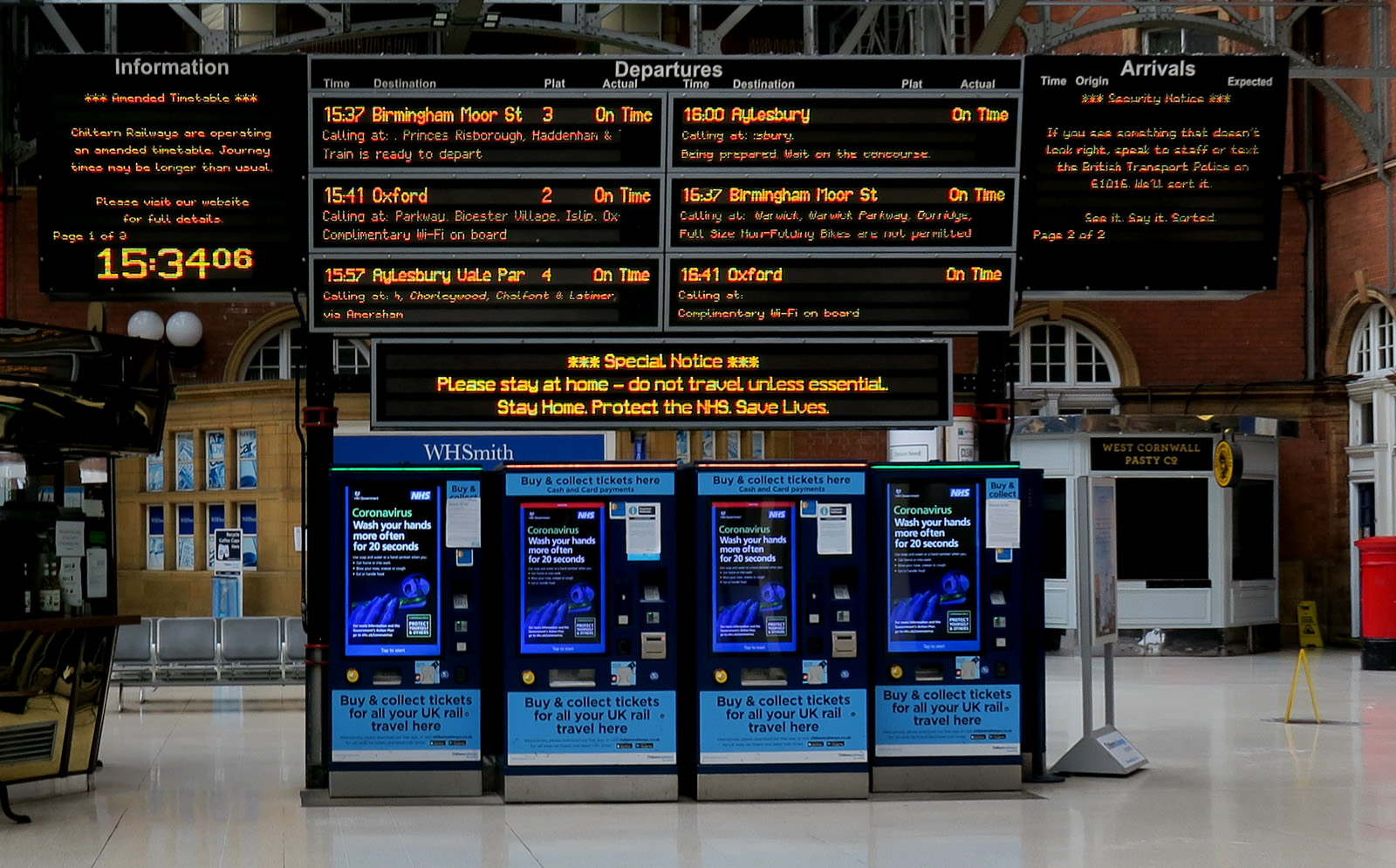 The ERMAs also contain provisions for the replacement of franchises when they come to an end. The precise nature of these will be spelt out in a White Paper, which will respond to the recommendations of the Williams Review of the railways. This review was set up in 2018 in the aftermath of difficulties with various franchises and a chaotic nationwide timetable change. The review’s findings were originally scheduled to be published in Autumn 2019, but were then put back because of the general election and the disruptions caused by the pandemic. The government hopes that it will be published before the end of 2020.
The ERMAs also contain provisions for the replacement of franchises when they come to an end. The precise nature of these will be spelt out in a White Paper, which will respond to the recommendations of the Williams Review of the railways. This review was set up in 2018 in the aftermath of difficulties with various franchises and a chaotic nationwide timetable change. The review’s findings were originally scheduled to be published in Autumn 2019, but were then put back because of the general election and the disruptions caused by the pandemic. The government hopes that it will be published before the end of 2020.
It is expected that the review will recommend replacing the franchise system with something similar to the currents ERMAs. TOCs awarded a contract will be paid a performance-related fee and revenues will go to the government, which will bear the costs. While this is not quite renationalisation, it is not the previous franchise system where TOCs bore the risks. It is in effect a contract system where private companies are paid to deliver a public service.
The CrossCountry franchise
 The first test of this new approach to contracting with TOCs came this month. Arriva’s franchise for running CrossCountry trains ran out and was replaced by a three-year contract to run the services, which span
The first test of this new approach to contracting with TOCs came this month. Arriva’s franchise for running CrossCountry trains ran out and was replaced by a three-year contract to run the services, which span  much of the length of Great Britain from Aberdeen to Penzance via Edinburgh, Glasgow, Newcastle, Sheffield, Birmingham, Bristol and Plymouth; from Bournemouth to Manchester via Reading, Oxford, Wolverhampton and Stoke; from Cardiff to Nottingham via Gloucester, Birmingham and Derby; and from Birmingham to Stanstead Airport via Leicester and Cambridge.
much of the length of Great Britain from Aberdeen to Penzance via Edinburgh, Glasgow, Newcastle, Sheffield, Birmingham, Bristol and Plymouth; from Bournemouth to Manchester via Reading, Oxford, Wolverhampton and Stoke; from Cardiff to Nottingham via Gloucester, Birmingham and Derby; and from Birmingham to Stanstead Airport via Leicester and Cambridge.
The contract will last three years. The Department for Transport will gain the revenues and cover the costs and pay Arriva (owned by Deutsche Bahn) a management fee that is ‘performance related’ – as yet unspecified. This, like the EMAs and then the ERMAs, will remove the risks from Arriva.
Nationalisation in Wales
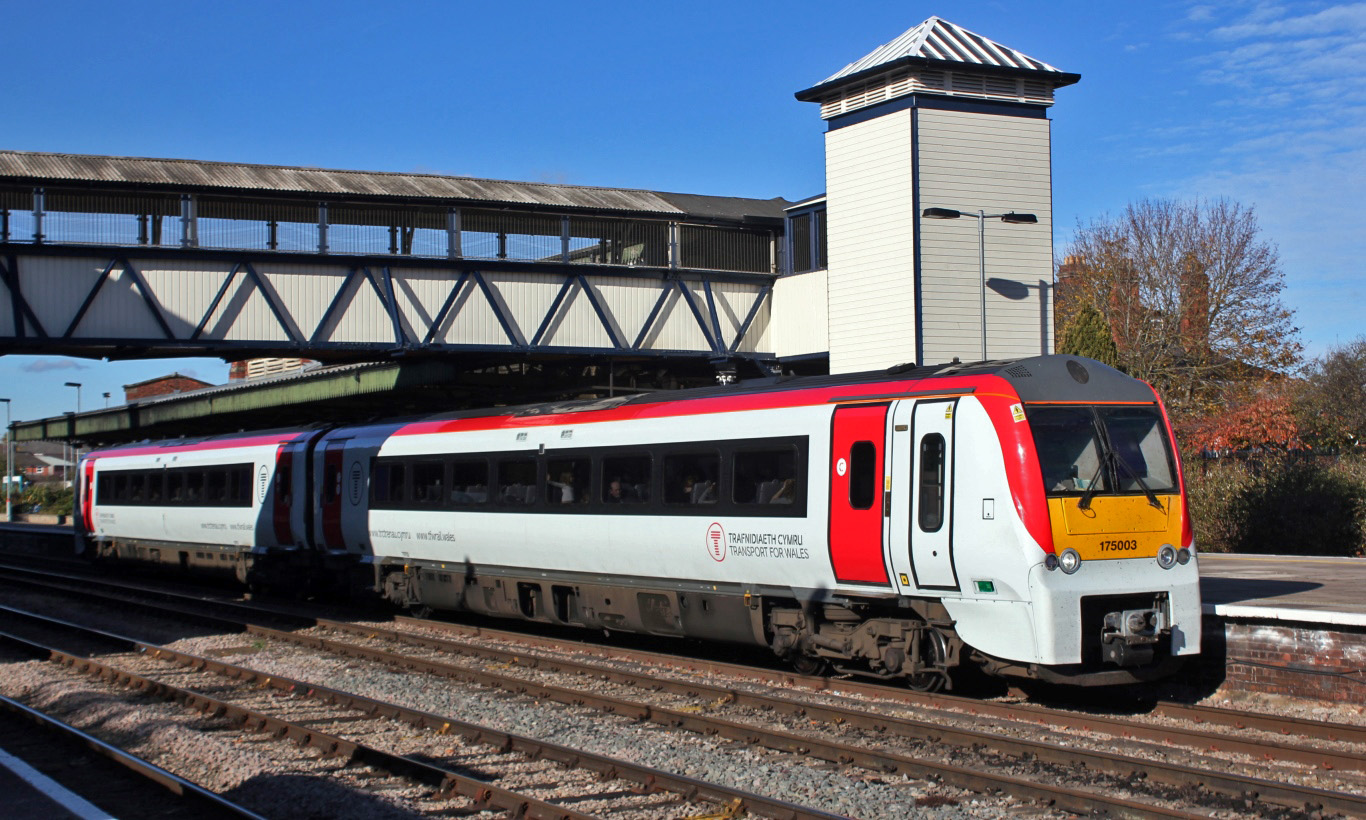 The Welsh government has announced that Transport for Wales will be taken over by a publicly owned company in February 2021. TfW operates many of the routes in Wales and the borders and most of the branch lines in Wales, including the valley commuter lines into Cardiff. It is currently owned by KeolisAmey (a joint company owned 70% by the French company, Keolis (part of SNCF), and 30% by the UK company, Amey), which took over the franchise in 2018 from Arriva. The Welsh government considered that KeolisAmey would collapse if it did not provide support. Ministers decided that nationalisation would give it greater control than simply subsidising KeolisAmey.
The Welsh government has announced that Transport for Wales will be taken over by a publicly owned company in February 2021. TfW operates many of the routes in Wales and the borders and most of the branch lines in Wales, including the valley commuter lines into Cardiff. It is currently owned by KeolisAmey (a joint company owned 70% by the French company, Keolis (part of SNCF), and 30% by the UK company, Amey), which took over the franchise in 2018 from Arriva. The Welsh government considered that KeolisAmey would collapse if it did not provide support. Ministers decided that nationalisation would give it greater control than simply subsidising KeolisAmey.
James Price, chief executive of the Welsh Government, stated that this allows it:
to reduce the profit we pay to the private sector massively over time, and make sure that when the revenue comes back, it comes back in to the taxpayer.
Under emergency measures, KeolisAmey has already been supported by the Welsh government to the tune of £105 million (£40 million in March and £65 million in June) to continue operating the franchise. Passenger numbers fell by 95% as the pandemic hit.
Is nationalisation a better way forward, or should private train operating companies continue with the government taking on the risks, or should the franchise system be amended with greater support from the government but with the TOCs still bearing risk? The articles below consider these issues.
Articles
- Rail nationalisations may be coming down the track
BBC News, Tom Burridge (17/9/20)
- ONS recognises full nationalisation of the UK railways
Financial Times, Tanya Powley (31/7/20)
- Train services are very efficient for shareholders – less so for customers
The Conversation, Daniel Fisher (22/8/19)
- UK government on standby to nationalise more rail lines
Financial Times, Jim Pickard and Philip Georgiadis (17/9/20)
- British Government Ends Rail Franchising
Railway-News, Josephine Cordero Sapién (21/9/20)
- British government announces end for rail franchise system
Trains, Keith Fender (12/10/20)
- Monday essay: A new era?
Railnews, Sim Harris (19/10/20)
- Arriva secures three-year CrossCountry contract
International railway Journal Kevin Smith (16/10/20)
- New contract signed for Arriva CrossCountry
RTM, Ailsa Cowen (16/10/20)
- Franchising is Dead
Railway-News, Josephine Cordero Sapién and Gareth Davies (16/9/20)
- Transport for Wales rail services to be nationalised
BBC News (23/10/20)
- Transport for Wales to be nationalised
Railnews (22/10/20)
- Why has the Welsh Government nationalised rail’s Wales and Borders franchise?
BusinessLive, Sion Barry (22/10/20)
Questions
- Explain how the franchising system worked (prior to March 2020).
- To what extent could each franchise be described as a ‘contestable monopoly’?
- What incentives were built into the franchising system to deliver improvements in service for passengers?
- What were the weaknesses of the franchising system?
- In the context of post-pandemic rail services, compare the relative merits of nationalisation with those of awarding contracts where the government receives the revenues and bears the costs and pays train operating companies a fee for operating the services where the size of the fee is performance related.
- What are the arguments for subsidising rail transport? What should determine the size of the subsidy?
 Each week, BBC Radio 4 broadcasts readings from a book serialised in five 15-minute episodes. In the week beginning 18 January 2021, the readings were from English Pastoral: An Inheritance by James Rebanks, a farmer from the Cumbrian fells. His farm is relatively small, covering 185 acres.
Each week, BBC Radio 4 broadcasts readings from a book serialised in five 15-minute episodes. In the week beginning 18 January 2021, the readings were from English Pastoral: An Inheritance by James Rebanks, a farmer from the Cumbrian fells. His farm is relatively small, covering 185 acres.  English Pastoral: James Rebanks on the future of food
English Pastoral: James Rebanks on the future of food Back in November, when Joe Biden had just been elected, we considered some of his proposed policies to tackle climate change (see
Back in November, when Joe Biden had just been elected, we considered some of his proposed policies to tackle climate change (see  The pipeline would have cut across First Nations land and any spills would have been highly toxic to the local environment. In terms of profitability, returns on tar sands oil extraction and transportation are very low. This is likely to remain the case as oil prices are likely to remain low, with greater global energy efficiency and the switch to renewables.
The pipeline would have cut across First Nations land and any spills would have been highly toxic to the local environment. In terms of profitability, returns on tar sands oil extraction and transportation are very low. This is likely to remain the case as oil prices are likely to remain low, with greater global energy efficiency and the switch to renewables.  The second executive order was to rejoin the
The second executive order was to rejoin the  In addition, to cancelling the Keystone XL pipeline and rejoining the Paris Agreement, the executive orders reversed more than 100 other decisions with negative environmental effects taken by the Trump administration – many overturning environmental measures introduced by previous administrations, especially the Obama administration.
In addition, to cancelling the Keystone XL pipeline and rejoining the Paris Agreement, the executive orders reversed more than 100 other decisions with negative environmental effects taken by the Trump administration – many overturning environmental measures introduced by previous administrations, especially the Obama administration.  Each year the BBC hosts the
Each year the BBC hosts the  In lectures 2, 3 and 4, he looks at three crises and how they have shaped and are shaping what we value. The crises are the financial crisis of 2007–9, the coronavirus pandemic and the climate crisis. They have challenged how we value money, health and the environment respectively and, more broadly, have prompted people to question what is valuable for individuals and society, both today and into the future.
In lectures 2, 3 and 4, he looks at three crises and how they have shaped and are shaping what we value. The crises are the financial crisis of 2007–9, the coronavirus pandemic and the climate crisis. They have challenged how we value money, health and the environment respectively and, more broadly, have prompted people to question what is valuable for individuals and society, both today and into the future. What is more, many of things that are produced in the market have side-effects which are not reflected in prices. These externalities, whether good or bad, can be substantial: for example, the global warming caused by CO2 emissions from industry, transport and electricity production from fossil fuels.
What is more, many of things that are produced in the market have side-effects which are not reflected in prices. These externalities, whether good or bad, can be substantial: for example, the global warming caused by CO2 emissions from industry, transport and electricity production from fossil fuels. 
 What is more, in June 2017, he announced that
What is more, in June 2017, he announced that 
 Although it will be difficult to persuade some Americans of the need for tougher policies to tackle climate change, Joe Biden has already made a number of pledges. He has stated that under his administration, the USA will
Although it will be difficult to persuade some Americans of the need for tougher policies to tackle climate change, Joe Biden has already made a number of pledges. He has stated that under his administration, the USA will  One of the biggest commitments is to tackle external costs directly by enacting ‘legislation requiring polluters to bear the full cost of their climate pollution’. This may be met with considerable resistance from US corporations. It is thus politically important for Biden to stress the short-term benefits of his policies, not just the long-term ones.
One of the biggest commitments is to tackle external costs directly by enacting ‘legislation requiring polluters to bear the full cost of their climate pollution’. This may be met with considerable resistance from US corporations. It is thus politically important for Biden to stress the short-term benefits of his policies, not just the long-term ones. The management of rail infrastructure, such as track, signalling and stations, was to be separated from the responsibility for running trains. There would be 25 passenger train operating companies (TOCs), each having a franchise lasting between seven and fifteen years. These companies would have few assets, being forced to rent track and lease stations from the infrastructure owner (Railtrack), and to lease trains and rolling stock from three new rolling-stock companies. …In practice, the 25 franchises were operated by just 11 companies (with one, National Express, having nine of the franchises).
The management of rail infrastructure, such as track, signalling and stations, was to be separated from the responsibility for running trains. There would be 25 passenger train operating companies (TOCs), each having a franchise lasting between seven and fifteen years. These companies would have few assets, being forced to rent track and lease stations from the infrastructure owner (Railtrack), and to lease trains and rolling stock from three new rolling-stock companies. …In practice, the 25 franchises were operated by just 11 companies (with one, National Express, having nine of the franchises). The spread of the coronavirus and the accompanying lockdowns and social distancing saw a plummeting of rail travel. Passenger numbers fell to just 10% of pre-pandemic levels. In March 2020, the UK Government introduced Emergency Measures Agreements (EMAs), which temporarily replaced rail franchise agreements. TOCs were paid a 2% fee (based on pre-Covid costs) to run trains and losses were
The spread of the coronavirus and the accompanying lockdowns and social distancing saw a plummeting of rail travel. Passenger numbers fell to just 10% of pre-pandemic levels. In March 2020, the UK Government introduced Emergency Measures Agreements (EMAs), which temporarily replaced rail franchise agreements. TOCs were paid a 2% fee (based on pre-Covid costs) to run trains and losses were  The ERMAs also contain provisions for the replacement of franchises when they come to an end. The precise nature of these will be spelt out in a White Paper, which will respond to the recommendations of the
The ERMAs also contain provisions for the replacement of franchises when they come to an end. The precise nature of these will be spelt out in a White Paper, which will respond to the recommendations of the  The first test of this new approach to contracting with TOCs came this month. Arriva’s franchise for running CrossCountry trains ran out and was replaced by a three-year contract to run the services,
The first test of this new approach to contracting with TOCs came this month. Arriva’s franchise for running CrossCountry trains ran out and was replaced by a three-year contract to run the services,  much of the length of Great Britain from Aberdeen to Penzance via Edinburgh, Glasgow, Newcastle, Sheffield, Birmingham, Bristol and Plymouth; from Bournemouth to Manchester via Reading, Oxford, Wolverhampton and Stoke; from Cardiff to Nottingham via Gloucester, Birmingham and Derby; and from Birmingham to Stanstead Airport via Leicester and Cambridge.
much of the length of Great Britain from Aberdeen to Penzance via Edinburgh, Glasgow, Newcastle, Sheffield, Birmingham, Bristol and Plymouth; from Bournemouth to Manchester via Reading, Oxford, Wolverhampton and Stoke; from Cardiff to Nottingham via Gloucester, Birmingham and Derby; and from Birmingham to Stanstead Airport via Leicester and Cambridge. The Welsh government has announced that Transport for Wales will be taken over by a publicly owned company in February 2021. TfW operates many of the routes in Wales and the borders and most of the branch lines in Wales, including the valley commuter lines into Cardiff. It is currently owned by
The Welsh government has announced that Transport for Wales will be taken over by a publicly owned company in February 2021. TfW operates many of the routes in Wales and the borders and most of the branch lines in Wales, including the valley commuter lines into Cardiff. It is currently owned by